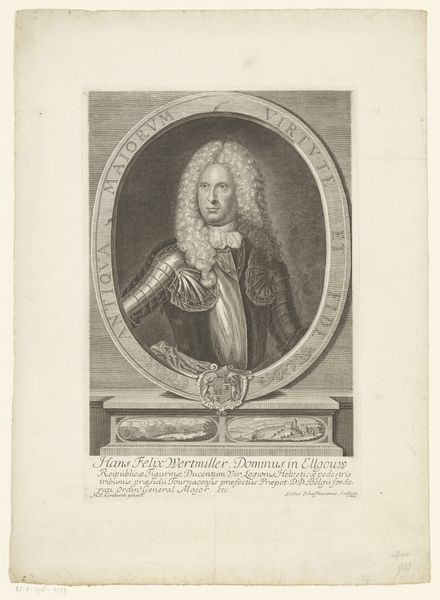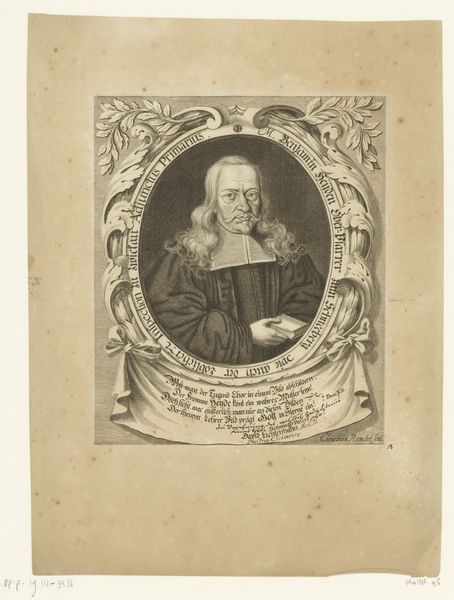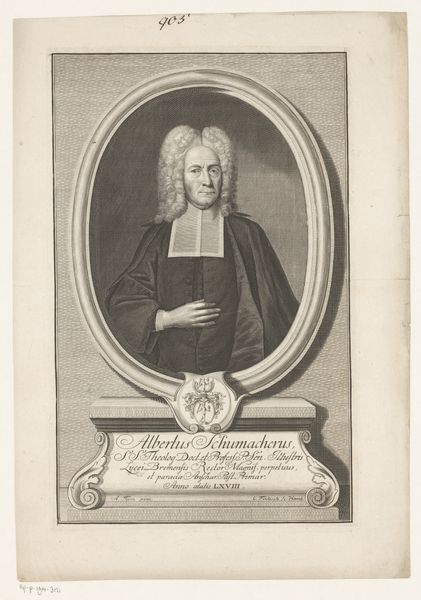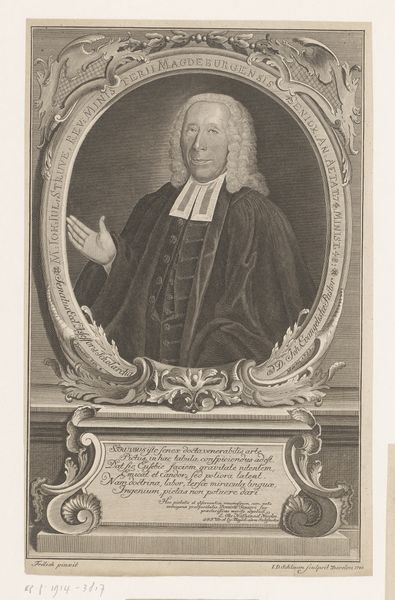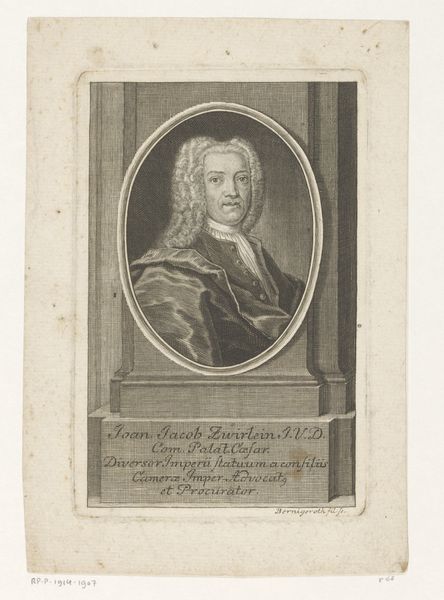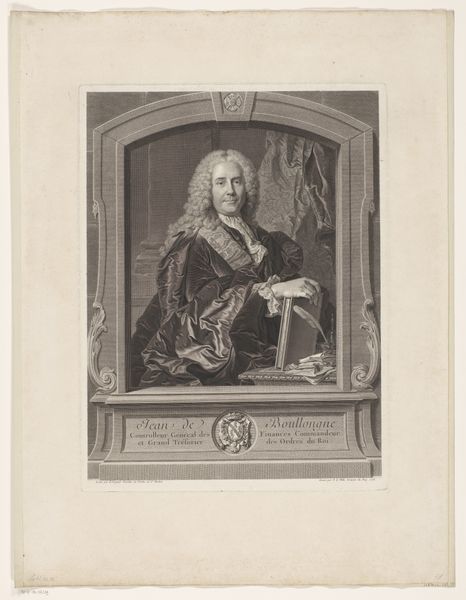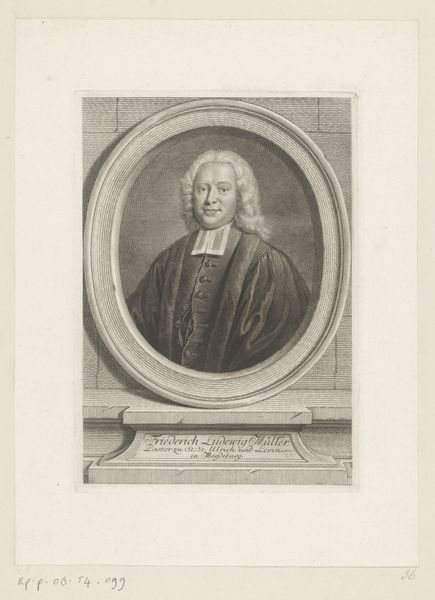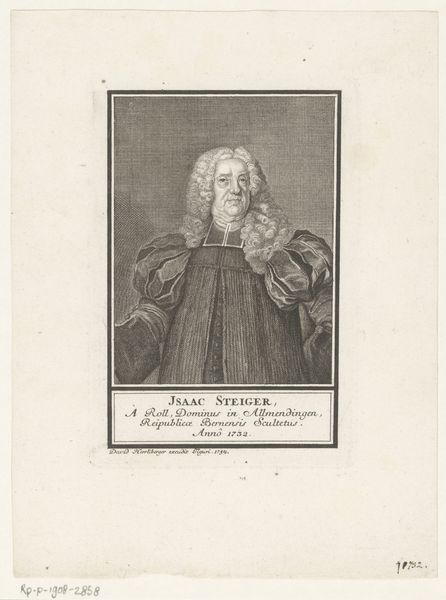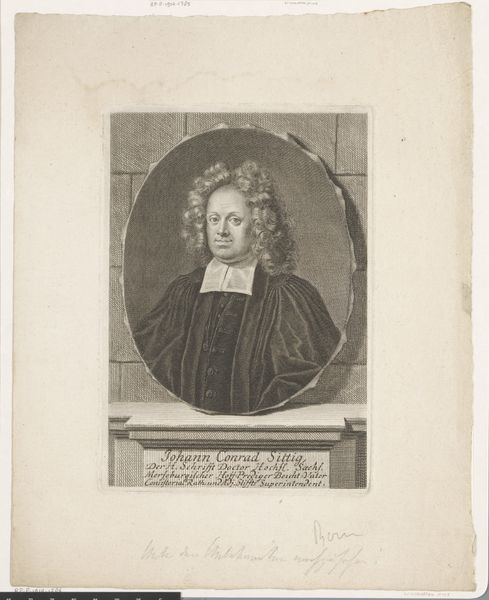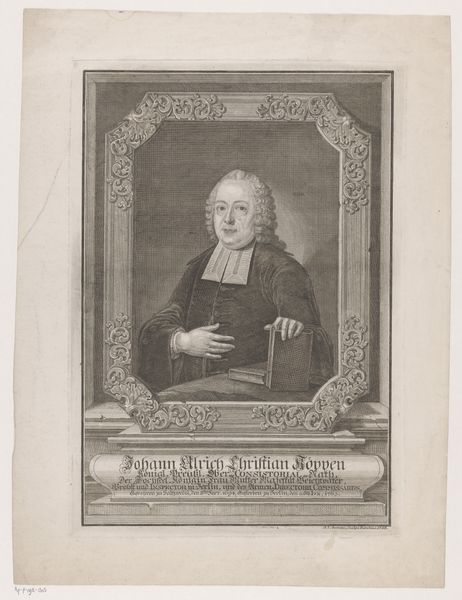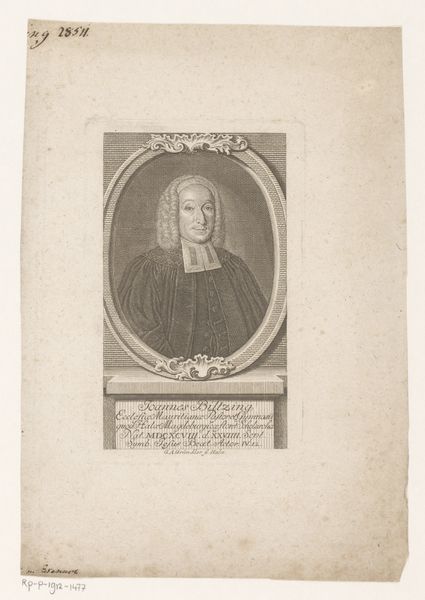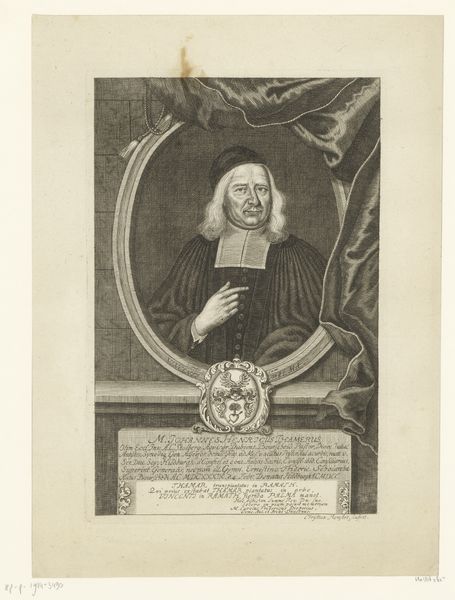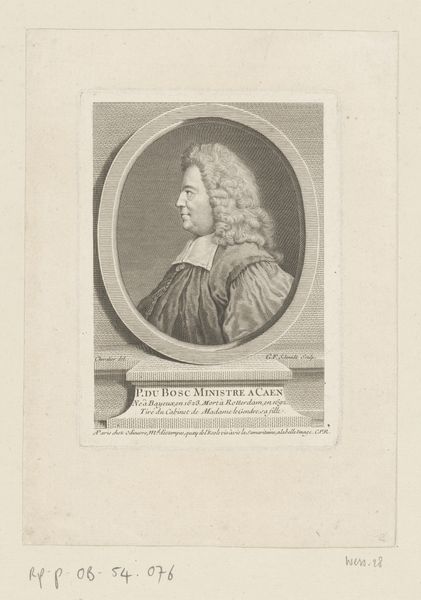
print, paper, engraving
#
portrait
#
baroque
# print
#
old engraving style
#
paper
#
history-painting
#
engraving
Dimensions: height 218 mm, width 160 mm
Copyright: Rijks Museum: Open Domain
Editor: Here we have "Portret van Christoph Bernhard Cruse," an engraving from 1745 by Christian Fritzsch. It's a fairly straightforward portrait, but something about the ornate frame around the central figure gives it a sense of importance. What can you tell me about it? Curator: What strikes me is how this print functions within the socio-political landscape of the 18th century. Printmaking made images more accessible. Think about how a portrait like this, replicated and distributed, would cement Cruse's authority, both religiously and intellectually. Who was Cruse and to whom was he important? Editor: According to the inscription, he was a "Superintendent and Scholar in Bremen." So, a leader within the church and intellectual circles, it sounds like. Do you think the print format democratized representation or did it mostly serve the established powers? Curator: That's the crucial question. While printmaking theoretically offered broader access, consider who controlled the means of production and distribution. Did images like these primarily circulate within elite networks, reinforcing existing hierarchies? Who was buying or displaying this print? Whose narrative does it reinforce? The pose, the wig, the frame – all coded markers of status. Editor: So it's not just about access, but also about who gets to define the visual language. I hadn’t thought about it that way. Curator: Exactly. Think of the museums today. Whose stories get told, and how are they presented? It's a continuation of this very dynamic: the power of images to shape our understanding of the past and the present. Editor: I see. Thanks. I hadn’t considered the social and political power dynamics involved in something as seemingly simple as a portrait print. Curator: It is these deeper analyses of what institutions and power want you to see that give a rich understanding of art's purpose and meaning.
Comments
No comments
Be the first to comment and join the conversation on the ultimate creative platform.
